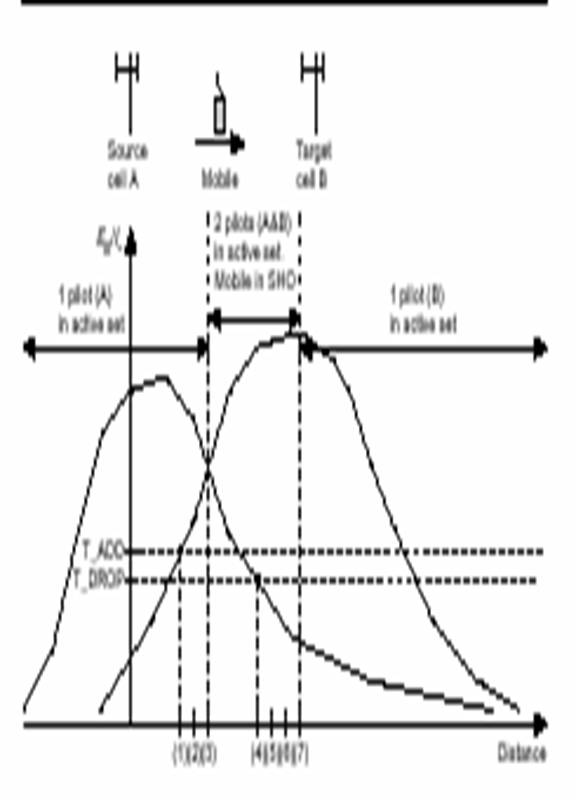Handoff Process
In the following example, we examine the handoff process from the source cell to the target cell. As Figure 4.18 shows, the mobile is moving from the coverage area of source cell A to the coverage area of target cell B. The following is a sequence of events during this transition:
1. The mobile here is being served by cell A only, and its active set con-tains only pilot A. The mobile measures pilot B E c /I 0 and finds it to be greater than T_ADD. The mobile sends a pilot strength measure-ment messageand moves pilot B from the neighbor set to the candi-date set.
2. The mobile receives a handoff direction message from cell A. The mes-sage directs the mobile to start communicating on a new traffic channel with cell B; the message contains the PN offset of cell B and the Walsh code of the newly assigned traffic channel.
3. The mobile moves pilot B from the candidate set to the active set. After acquiring the forward traffic channel specified in the handoff direction message, the mobile sends a handoff completion message. Now the active set contains two pilots.
4. The mobile detects that pilot A has now dropped below T_DROP.The mobile starts the drop timer.
5. The drop timer reaches T_TDROP. The mobile sends a pilot strength measurement message.
6. The mobile receives a handoff direction message. The message contains only the PN offset of cell B. The PN offset of cell A is not included in the message.
7. The mobile moves pilot A from the active set to the neighbor set, and it sends a handoff completion message.
There is another mechanism that can trigger the transmission of a pilot strength measurement message by the mobile. If the strength of a pilot in the can-didate set exceeds the strength of a pilot in the active set by the active set versus
Figure The handoff process. After [1].
